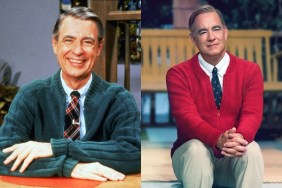“I went to the masquerade disguised as myself. And not one of my friends recognized me.” – Bob Kaufman
Though many of the most dedicated, serious, and truly knowledgeable scholars of the Beat Generation (its art and artists) position the late Bob Kaufman as the quintessential Beat, even more books, documentaries and oral histories omit any mention of the surreal/experimental/street poet who some scholars argue actually coined the term “Beat.” If not for the tireless work of his second wife Eileen, who all but dedicated her life to advocating on behalf of his work – advocacy that was picked up by scholars and fellow poets – Kaufman might well have fallen through the cracks of history. Though that would have been a huge cultural loss, it would have been in line with the approach Kaufman, whom the French dubbed the American Rimbaud, took to his life and work. He reportedly told friend and editor Raymond Foye, “My ambition is to be forgotten.”
And When I Die, I Won’t Stay Dead, title lifted from a line in one of Kaufman’s poems, is director Billy Woodberry’s inspired, moving meditation on Kaufman’s work and legacy. A seamless marriage of director and subject, the film is not only scored by but also moves to the rhythms of jazz and is itself a kind of poetry. Fans of Woodberry’s masterful 1984 film Bless Their Little Hearts (selected for preservation in the National Film Registry) won’t be surprised at the taut intelligence and rich artfulness of And When I Die, in which the director upends many bio-doc conventions. He opens the film by dropping the viewer into Kaufman’s narrative at its boiling point – after he has already made waves and a name for himself in San Francisco’s fecund poetry scene of the mid-twentieth century.

Bob and Eileen Kaufman
Given to scribbling his poems on napkins and scraps of paper, from which he read in bars, bakeries, coffee houses, and on the street, he’s already a tumultuous local literary star when the viewer meets him. But his skin tone (he was half white Jewish, half African American) and street-honed politics prevented him from being fully accepted by many Beats, and made him a target for racist cops. He once wrote on a piece of paper, “Adolf Hitler, growing tired of burning Jews, moved to San Francisco and became a cop,” and taped it to the wall of a coffee shop. Cops came in and ripped it down. His politics, coupled with his relationship with a white woman, made him a magnet for the police. During this early section, the film delicately peels back the various interlocked layers of Kaufman’s life – the Happenings in which he participated, his complicated love life and role as a father, the evolution of his art, his battles with cops and drug addiction. We’re also given grim details on a life-altering event: how a bogus arrest in New York led to him being sent to Bellevue, where involuntary electric shock treatments left permanent side-effects.
The film is almost two-thirds in before Woodberry turns his camera to Kaufman’s birthplace (New Orleans) and interviews his relatives. One sister notes that their mother was “a benevolent dictator” who stressed intellectual excellence for her children. From there we meet Kaufman’s first wife, learn of his radical union-building activism (undertaken along with his wife), his battles with everyday racism, and how the FBI kept a thick file on him. His activism shaped the worldview that grounds his poetry.
The choice to give foundational biographical information so late in the film proves to be a successful gambit. As the film unfolds, the viewer is increasingly made to wonder who Kaufman is, where he came from, how’d he amass the wealth of knowledge and influences that flow through his work. He’s a mystery that the film solves/resolves in its own good time, putting viewers in the same position of questioning and wondering that so many people who knew Kaufman — either as an acquaintance, a towering literary figure, or family member — occupied for so long.

Bob Kaufman mugshot
One of the most potent aspects of And When I Die is Woodberry’s fully fleshed out depiction of the larger cultural, social and political canvases against which Kaufman lived and railed. The viewer is given a rich sense of 1950s/60s San Francisco as a kind of leftist utopia that was also incredibly racist. The devastating effects of the Red Scare on America are captured through the examination of Kaufman’s days as a resourceful, dedicated union activist. The film isn’t just a capture of Kaufman, but a deep capture of 20th century America and the ways in which shifting tenors of the times shaped and misshaped Kaufman, the ways in which his interior life responded to the world around him, manifesting in his work.
It’s all powerfully framed by Woodberry. In part, that’s through the insightful interviews of friends, family and fellow poets, but it’s also through the choices the director makes regarding carefully deployed music, still photos and home movie clips, mugshots, and newspaper clippings. Woodberry doesn’t rush things. He lets his camera linger and pull the viewer in as long passages of Kaufman’s poetry are read, and as photo montages unfold against the jazz score at different points in the film. The images that flow across the screen are absolutely beautiful, mesmerizing – nodding toward romanticized notions of the past even as the film pushes far beyond simple romance or fetish for nostalgia.

Given the upheaval in the literary world, specifically the realm of poetry, over the last year, with rigorous pushback against a locked-down Eurocentric canon and its tunnel-visioned gatekeepers (issues addressed in And When I Die as they pertained to Kaufman and other black poets in his day), the timing of the documentary’s release into the world is perfect. Its real gift, though, is in being a soulful, artful, insightful overview of Kaufman’s life and work.
And When I Die, I Won’t Stay Dead screens at the Redcat Theater in downtown Los Angeles on January 11, 2016, at 8:30 PM, and will screen at various venues and festivals throughout the rest of the year. (It screens in Chicago, at the Poetry Foundation, Thursday April 21, 2016 at 6 PM.)
All images courtesy Billy Woodberry.
Previously on Art Doc of the Week:
Art Doc of the Week
-
Art Doc of the Week | Los Punks: We Are All We Have

The award-winning doc looks at Los Angeles’ 40-year-old punk scene.
Photo: Angela Boatwright
-
Art Doc of the Week | McQueen and I

The late fashion designer Alexander McQueen’s life was as unconventional as his iconic shows.
Photo: Alexander McQueen: Savage Beauty
-
Art Doc of the Week | Who Is Poly Styrene?

The late British-Somali punk icon was vulnerable in her feminist art.
Image Courtesy the Artist Estate
-
Art Doc of the Week | Eva Hesse

The new documentary on the on the late visual artist is both informative and soulful.
Image Courtesy the Filmmaker
-
Art Doc of the Week | Packed in a Trunk

Edith Lake Wilkinson’s great niece investigates why the painter was institutionalized for seemingly no reason.
Photo: Wolfe Video
-
Art Doc of the Week | The Kate Bush Story

The 2014 BBC documentary on the reclusive pop star lets her high-profile fans swoon all over her.
Photo: Peter Mazel / Sunshine
-
Art Doc of the Week | Nikki Giovanni and Muhammad Ali in Conversation

The ionic poet interviews and is charmed by the sports legend for Soul talk show.
Photo: Getty Images
-
Art Doc of the Week | They Will Have to Kill Us First

Malian musicians use their music to stand up to Islamic fundamentalists.
Photo: BBC Worldwide
-
Art Doc of the Week | Step Up and Be Vocal

The 2001 film looks at the role punk played and plays in shaping some queer and feminist identities.
Photo: PansyDivision.com
-
Art Doc of the Week | Mapplethorpe: Look at the Pictures

The first ever documentary on Robert Mapplethorpe makes the case for his art and legacy while showing his warts and all.
Photo: J. Paul Getty Trust / LACMA / Robert Mapplethorpe Foundation
-
Art Doc of the Week | Parliament Funkadelic: One Nation Under A Groove

Director Yvonne Smith traces funk from its doo-wop origins to its role as a building-block of hip-hop.
Photo: GeorgeClinton.com
-
Art Doc of the Week | Pete Seeger: The Power of Song

An OG political protest singer has much to teach us today.
Photo: Reuters
-
Art Doc of the Week | The Post Impressionists: Munch

Edvard Munch was a poster boy for the idea of the artist as brilliant, immeasurably tortured soul.
-
Art Doc of the Week | Detroit, Vogue

Director Mollie Mills’s short doc on Detroit’s current ball culture is high on visual impact, skimpy on substance.
Photo: Vogue, Detroit
-
Art Doc of the Week | Colored Frames
 The paintings highlighted in Lerone D. Wilson’s film are pulled into deep conversation with the complex realities of black life.
The paintings highlighted in Lerone D. Wilson’s film are pulled into deep conversation with the complex realities of black life.Photo: Colored Frames
-
Art Doc of the Week | Spirits of Rebellion

Filmmaker Zeinabu Irene Davis’ documentary on filmmakers of the LA Rebellion is timely and illuminating.
Photo: Spirits of Rebellion / Julie Dash
-
Art Doc of the Week | Five

The 1971 documentary gives an overview of five African American visual artists as the bloody ‘60s turn into the hopeful ‘70s.
Photo: 110 St Harlem Blues, by Romare Bearden, courtesy DC Moore Gallery
-
Art Doc of the Week | Masters of Photography: Diane Arbus

This 1972 documentary filmed one year after the photographer’s suicide is intimate and revealing.
Top Photo: Roz Kelly / Getty Images
-
Art Doc of the Week | Dorothea Lange: An American Odyssey

The iconic photographer’s images of 20th century Depression-era America speak to current battles around class, race, immigration, and poverty.
Photo: Dorothea Lange
-
Art Doc of the Week | Out and Bad: London’s LGBT Dancehall Scene

The struggles and joys of forging queer identity within dancehall culture.
Photo: Dazed/Bernard Miller
-
Art Doc of the Week | And When I Die, I Won't Stay Dead

Director Billy Woodberry’s poetic take on the life and work of beat poet Bob Kaufman.
Photo: Billy Woodberry
-
Art Doc of the Week | The Sound of Redemption

Director N.C. Heikin turns saxophonist Frank Morgan’s life into one of 2015’s best documentaries.
-
Art Doc of the Week | It Came from Kuchar

The Bronx-raised Kuchar twins helped pioneer American underground film.
Photo: Indie Pix
-
Art Doc of the Week | Tamara de Lempicka

The visionary artist, an OG Material Girl, is still struggling to get art world respect.
Photo: http://www.delempicka.org/
-
Art Doc of the Week | Jaco

A documentary on the life and music of Jaco Pastorius also probes link between mental illness and creativity.
Photo: JacoPastorius.com
-
Art Doc of the Week | Janis Joplin: Little Girl Blue

A new documentary on the late rock icon digs beneath the lore to find a complex woman and artist.
Photo: Evening Standard/Getty Images
-
Art Doc of the Week | The Many Faces of Billie Holiday

Lady Day was much more than her blues, as this documentary makes clear.
Photo: The William P. Gottlieb Collection
-
Art Doc of the Week | Anita Sarko

The legendary DJ’s words on art, culture and creativity resonate powerfully in the wake of her recent death.
Photo: Svetlana Samoshina
-
Art Doc of the Week | Antonio Gaudi

Filmmaker Hiroshi Teshigahara lets out his inner fanboy as he pays tribute to his hero, iconic architect Antonio Gaudi.
Photo: The Criterion Collection
-
Art Doc of the Week | Poetry of Resilience

Katja Esson's documentary allows poets to reclaim the depth and possibilities of art.
Photo: Jeremy Sutton Hibbert






